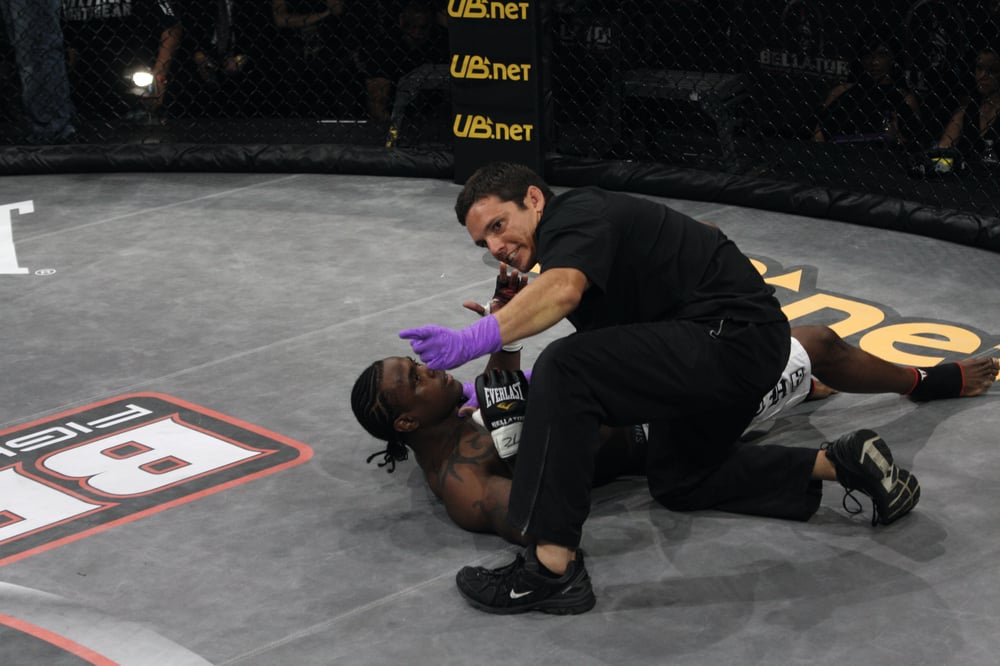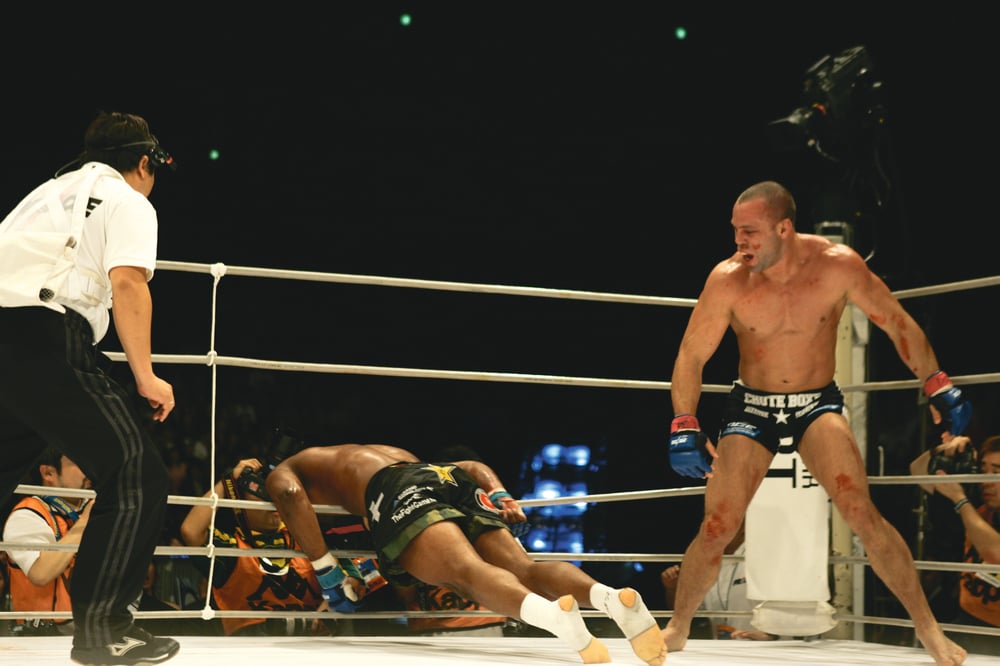
Issue 068
October 2010
The KO is the holy grail of combat sports. But to this day doctors don’t know exactly how or why it happens. Join Fighters Only as we unravel the greatest mystery in MMA.
The knockout is what fighters train for, and train to avoid. Any fighter who perfects the art of sending his opponents to sleep in the Octagon is sure to become an immediate favorite. Conversely, someone who gets a reputation for having a ‘glass jaw’ is likely to have a short career in the sport.
But what is a ‘glass jaw’ or a ‘good chin’? Why can some fighters absorb huge blows with no visible effects while others depart the waking world with a seemingly light tap to the right spot? What exactly happens in a fighter’s brain during a KO?
The truth that emerges when experts and leading doctors are consulted is a surprising one: they don’t really know. MMA fan and Association of Boxing Commissions’ MMA Medical Subcommittee member, Dr Johnny Benjamin, says: “Currently, medical science does not fully or clearly understand the mechanism, anatomy or physiology of the knockout.”
To some extent that’s understandable. The leading precept of medical research ethics, ‘First, do no harm,’ is difficult to apply in an experiment that would involve Shane Carwin punching test subjects into unconsciousness as they lie in a brain scanner. Moreovoer, analysis of a knockout is inevitably carried out quite some time after the event, making it difficult for researchers to ascertain precisely what happened inside the victim’s skull.
Fortunately, some doctors have dedicated themselves to looking for the answers. One of them is neurologist Dr Barry D. Jordan, Chief Medical Officer of the New York State Athletic Commission and author of the book Medical Aspects of Boxing – and a fan of combat sports. “Unconsciousness from a blow,” he explains, “is almost always caused by rapid rotation or acceleration of the brain.”
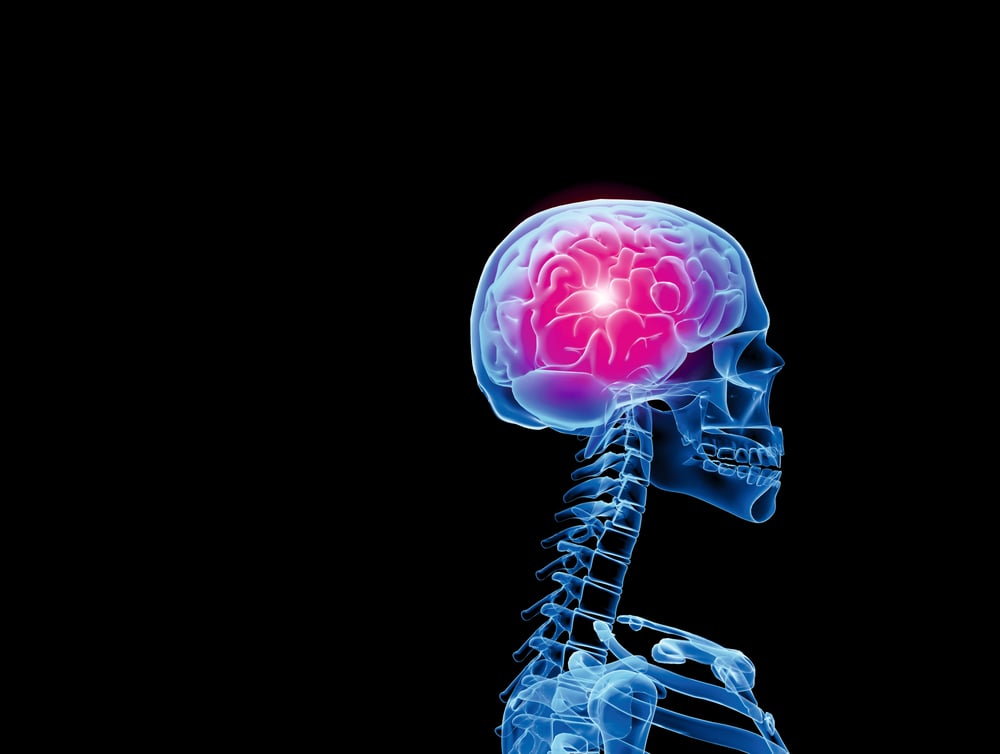
The brain is surrounded by something called cerebrospinal fluid, or CSF. One of the jobs of CSF is to protect the brain from impact, cushioning it and preventing contact with the skull. Deeper inside the brain lies the brain stem. This part of the brain is connected to the rest of the nervous system. Many autonomous functions are controlled there - things that work without you even thinking, such as blood pressure, digestion and heart rate. Connecting the brain stem to the ‘higher’ conscious functions of the brain is the Reticular Activating System, or RAS. This is the crux of a knockout.
The RAS is a system of circuits responsible for controlling sleeping to waking transitions. It’s ancient: in evolutionary terms it’s one of the oldest parts of our brains. The RAS is disrupted we can black out – making it the most likely cause of knockouts.
Dr Jordan explains that when the head is struck hard enough to cause rapid rotation or acceleration it causes a cascade of events, beginning with the stretching of nerve cells (neurons that send and receive information relating to the body and its functions) inside the brain. This causes a massive release of neurotransmitter chemicals. Calcium and potassium, for example, rush in and out of nerve cells and the circuit that controls sleeping and waking breaks – the fighter loses consciousness. In layman’s terms it’s like spilling Coke on your laptop.
This disruption of the RAS is generally understood to be the main mechanism for causing unconsciousness. Other theories have been put forward but Dr Jordan dismisses most of them, including the widely-held notion of a ‘nerve behind the jaw’ that causes a KO when struck by the jawbone rapidly moving backwards. There are sensitive nerve clusters in this area, under the jawbone and beside the carotid arteries, but Dr Benjamin suggests that a KO would only be caused by force transmitted through the temporomandibular joint (TMJ) where the upper and lower jaws meet. This force would go on to the brain stem and cause the knockout cascade explained earlier.
In the same way, there’s nothing physiologically special about a shot to the temple – another high-percentage KO causer – except that it will rapidly accelerate the head in a way that starts that same knockout chemical sequence.
One more established theory that gets short shrift from the doctors is fighters with oversized skulls have more knockout resistance. According to Dr Jordan, the difference is so small as to be insignificant. Neck strength, however, can play a part. Two big muscles, known as the sternocleidomastoid muscles or SCMs, run up the sides of the neck stabilizing the head and helping it to absorb impact. Developing and strengthening these muscles can help reduce head movement when it is struck – but only up to a point. Even a thick-necked individual carries less muscle mass there than a 100lb fighter has in his or her arm alone, which is why smaller fighters can, with a good shot, still knock out bigger opponents. The other factor to consider here is awareness. As Dr Jordan puts it: “If you don’t see it coming, you can’t use your neck muscles.”
So if it’s not skull thickness or neck muscles that account for the differences in fighters’ abilities to take a shot, what does? The answer’s been around for a long time, but medical science is only now starting to catch up. The great boxing trainer Angelo Dundee once said: “You can’t train a chin.” It seems he was right. Dr Jordan’s research indicates that the difference between one fighter going down and another fighter staying up from the same shot is probably genetic. It might well be that the knockout cascade of neurological events is harder to trigger in some brains than in others.
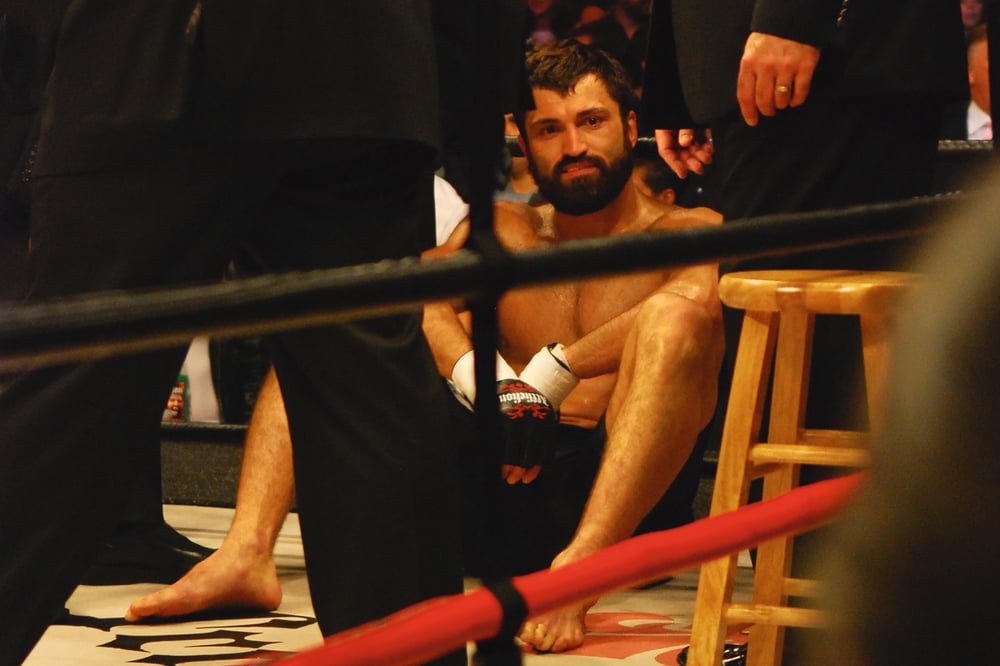
Some observers of combat sports have another theory: that the difference between a good chin and a bad chin isn’t the ability to take a blow, but the ability to ‘reboot’ quickly. They suggest that some fighters, when rocked, go out the same as everyone else but simply come back to consciousness quicker. While Dr Jordan says that a ‘flash knockout’ is caused the same way as any other knockout, he disputes the ‘reboot’ theory and puts it down to differences in resistance to the initial blow.
Certainly when the head is ‘shaken’ from a blow more than the RAS (that ‘sleep-wake controller’) is affected. Things like the vestibular system in the inner ear, which controls balance and movement, can be disrupted, causing staggering and disorientation. This quite often leads to a referee stoppage or TKO, but isn’t the same as actually being knocked unconscious.
Although a good chin seems to be something one is born with, certain things seem to have the ability to reduce whatever resistance to KOs your genes have given you. One of them is cutting weight.
Big weight cuts are well known for sapping fighters’ strength and endurance but they can also make a fighter more prone to being knocked out. It could be that insufficient rehydration after the weight cut leaves a fighter with less stamina and more likely to drop his hands in tiredness. But many doctors and coaches think there could be another factor involved.
When a fighter dehydrates himself to make weight, fluid is lost from all areas of the body, including CSF, that fluid around the brain which serves as its cushion after blows to the head. Whether the volume of CSF remains lowered after a cut or if it’s the consistency of it that’s affected is unknown. What is clear is that something happens which can increase the susceptibility of a fighter to blows.
Any reduction in the protective effects of the CSF could leave a fighter vulnerable to something much more serious than a ‘simple’ knockout. In some concussions, the brain actually strikes the inside of the skull, leading to a contusion, or bruise, on the brain. Depending upon the manner in which the brain strikes the skull, these are known as ‘coup’ or ‘contrecoup’ injuries and can lead to severe short-term and long-term consequences for the fighter’s health.
Dr Happy Reynolds, an MMA ringside physician for the California State Athletic Commission, and ex-Muay Thai boxer, cautions of the dangers of severe weight cuts. She explains: “If you are cutting massive weight your body does try to compensate, but you are at greater risk of cerebral edema (brain swelling) when you rehydrate.” Her personal belief is that in MMA there should be a specific weight bracket – set after a medical examination – in which fighters are only allowed to compete within, as is the case with high-school wrestling in the USA. There, doctors determine that a fighter of a certain sized frame can only ever fight at, for example, middleweight or above even if he cuts weight and makes welterweight. This system has reduced injuries and complications from weight cutting in high-school wrestling. But Reynolds doesn’t see it happening any time soon in professional MMA due to the financial pressures of the sport on fighters – and promoters’ desire to build champions.
Something else which is well known and empirically observed, but still waiting for a scientific explanation, is the phenomenon of a fighter having had his ‘trigger pulled’. That is to say, the observation that once a fighter has been knocked out once, he will typically be more prone to being knocked out again in the future. Most research in this area seems to come from football where the phenomenon is widely recognized, but at this point no clear mechanism has been proposed or theory generally accepted.
This has implications for how fighters should train. Dr Reynolds points out that if fighters spar to the point of KO, they’re increasing their chances of getting knocked out in the cage. The neurotransmitters in the brain take time to return to normal after being knocked out “which is why there are rest periods (medical suspensions) after KOs.”
It’s clear that a lot of work needs to be done before the exact systems – and consequences – of the knockout are understood. Dr Benjamin goes as far as to describe the hard scientific evidence as “scarce to non-existent” while Dr Reynolds points out that in concussion research, some experts cannot even agree on the definition of a knockout while she colorfully, but accurately, describes the situation as a “cluster f**k”.
One thing everyone agrees on is that the best defense against the knockout is a good defense. There’s a reason Anderson Silva’s never been knocked unconscious and it’s likely nothing to do with the thickness of his neck or any genetically gifted brain durability he may possess.
Angelo Dundee may have been right when he said that you can’t train a chin, but he knew that you can train something just as important – to keep your hands up.
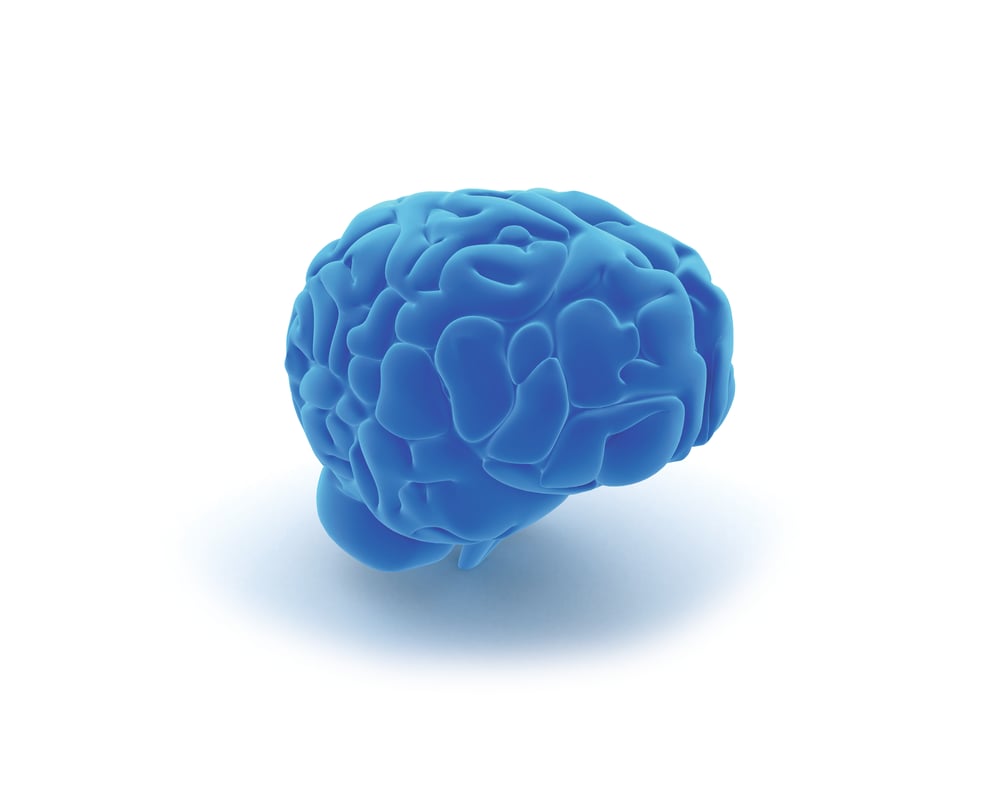
KO THEORY 1: The RAS
What?
The Reticular Activating System. It’s in your brain and controls whether you stay awake or not. If you suffer a violent rotation of the brain on the brain stem it activates a chemical sequence in your brain that ultimately forces a knockout.
Likelihood
Research suggests this is the basis for all knockouts.
KO THEORY 2: Jaw impact
What?
An impact on the jaw pushes the bone onto nerves around it and causes the brain to momentarily shut off.
Likelihood
Could instigate the RAS chemical reaction, but nerves aren’t the sole cause. Also doesn’t explain why fighters go out when hit anywhere other than the jaw.
KO THEORY 3: Skull size
What?
A small skull means lower resistance against blows to the head.
Likelihood
According to research it barely plays a factor, whereas neck strength, often associated with large-headed folk, may partially increase resilience.
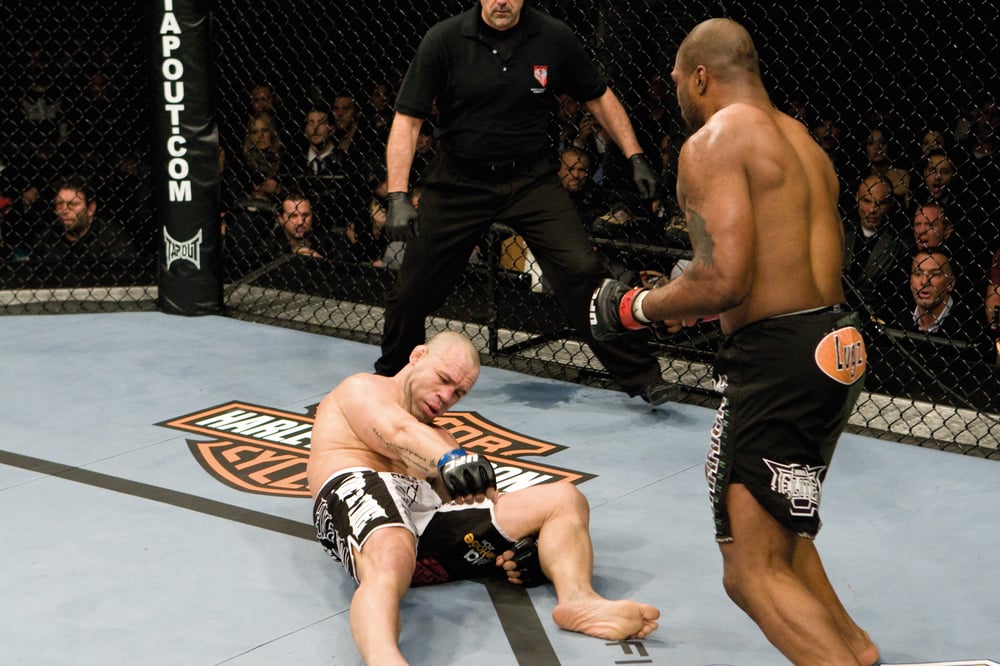
KO THEORY 4: Genetics
What?
The RAS chemical reaction is less likely to be instigated in certain individuals due to their natural physiological make up.
Likelihood
Little empirical evidence thus hard to justify.
KO THEORY 5: Hydration
What?
Water lost from a weight cut means the fluid around the brain that cushions impact is negatively affected, reducing a fighter’s resistance to blows.
Likelihood
Anecdotally, fighters that have bad weight cuts by losing lots of fluid seem to be more sensitive to head strikes. Physiological theory backs it up.
KO THEORY 6: ‘Reboot’ theory
What?
Certain people are just as sensitive to the initiation of the RAS chemical sequence but are able to ‘reboot’ and come back to consciousness much quicker than others.
Likelihood
Some fighters appear to recover fast from blows but scant hard evidence suggest it could be down to other factors.
KO THEORY 7: Previous knockout
What?
A fighter who has suffered a recent knockout before is more prone to strikes than previously.
Likelihood
High. Neurotransmitters involved in the RAS cascade take time to reset to their previous state. Although, there is no single cohesive theory to back it up.
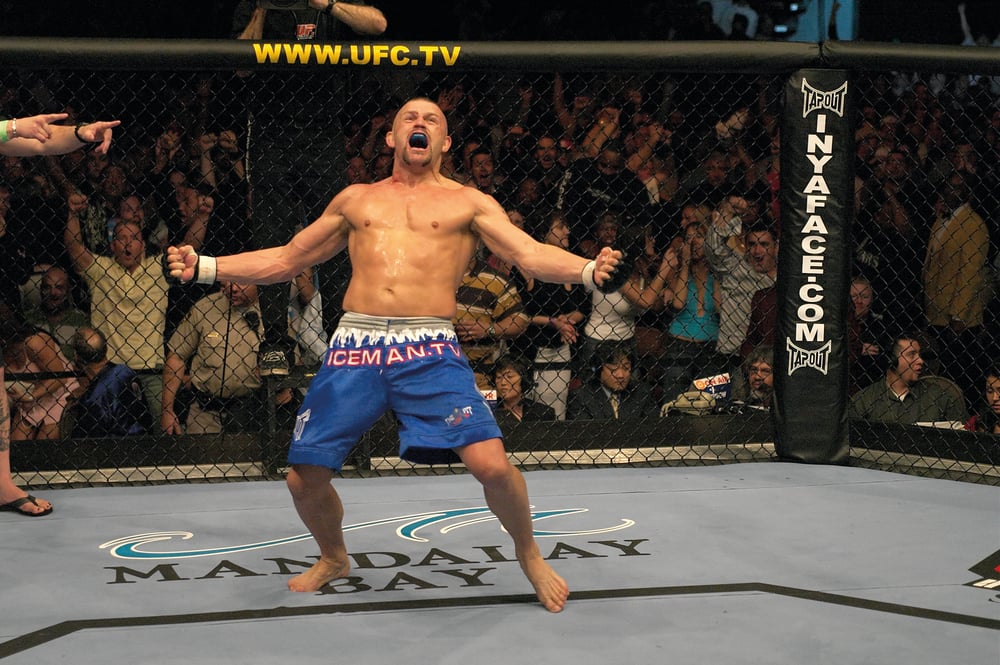
THE KO ARTISTS
Any joker can score a TKO, but how about abruptly ending an opponent’s night with a single strike? There are few fighters more capable than the following…
Mirko ‘Cro Cop’
Number of knockouts: 6
Though he hasn’t secured a clean KO in his UFC tenure, Mirko’s notorious conscious-closing left high kick made him a fight star across the world. If you include the Croatian’s kickboxing career he’s notched a further five.
Wanderlei Silva
Number of knockouts: 13
Though only two of Wanderlei’s massive 13 knockouts have come in the UFC (one in 1999, the other in 2008) the Brazilian menaced the Pride ring with fight-ending stomps as well as fists. He hasn’t dropped anyone to the canvas cleanly of late, but, as they say, history always repeats itself.
Chuck Liddell
Number of knockouts: 9
‘The Iceman’ didn’t become a mainstream celebrity by cuddling kittens. It was his hefty highlight reel filled with a massive nine KOs, courtesy of heavy bombs like his trademark overhand right. Opponents might’ve been on the other end recently but Liddell will always be dangerous.
Notable mentions: Gilbert Yvel, Anderson Silva, Vitor Belfort, ‘Shogun’ Rua and Jens Pulver.



